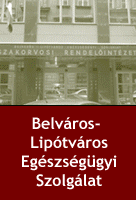- A nap híre
- Régebbi hírek
- Tanácsadás
- Kereső
- Hírlevél
- Lexikon
- GYIK
- Képgalériák
- Látogatók
- Elérhetőség
- Ajánlatkérés
- Díjtételek



McKesson Migrates To Linux As Boost To Patient Safety
The healthcare services company moved 50 of its 70 applications to Linux over the last two years and will complete the process with the remaining 20 within a year or two.
So McKesson has migrated 50 of its 70 applications to Linux over the last two years and will complete the process with the remaining 20 within a year or two, said Michael Simpson, senior VP and general manager of the unit. All new applications are written for Linux, specifically, Red Hat Enterprise Linux.
"We standardize completely on Red Hat... Standardizing on one distribution increases reliability and safety, and customers don't really want to support six different distributions in-house," said Simpson in an interview. The McKesson/Red Hat partnership is a significant one in the growing field of health care. Handling patient medical records and supplying provider IT systems is a significant contributor to healthcare costs. Generating examples of how to lower those costs can be a feather in the cap of a major supplier to the healthcare industry.
McKesson traces its roots as a national supplier of pharmaceuticals back over 174 years; it's been a supplier of medical IT systems for a somewhat shorter period. But those IT systems remain an important part of its business. It generated $1.3 billion in revenues from healthcare software in 2005, $1.6 billion in 2006 and $1.9 billion in 2007, indicating it's growing software revenues about $300 million a year.
That is just 2% of its overall $93 billion in revenues in fiscal 2007; most of its revenues come from distributing pharmaceuticals. But McKesson would like to make it an exemplary 2%. Not only does McKesson emphasize the potential savings of its Red Hat-based applications, it also emphasizes the improved safety and service of its software.
Its Medication Safety Advantage software lets a nurse bearing medications to patients check a bar code on the prescription that matches up with a bar code on the patient's bracelet. The Institute of Medicine in 2001 found that 1.5 million mistakes in giving patients medicine occurred each year in hospitals, nursing homes and doctor's offices , leading to harm of the patient as a result.
Doctors' hurriedly scribbled prescriptions are one source of the problem. "A pharmacist misinterpreting one letter of the handwriting can have major consequences. Many of the drugs have names with similar spellings," Simpson noted.
Nurses who are responsible for distribution medications to many patients in a limited time frame is another challenge. The McKesson system "matches the right drugs to the right patient at the patient bedside," said Simpson.
By encouraging the use of Linux, healthcare providers are saving "50% - 60% of their capital expense budgets" and often reinvesting the savings in software, such as Medication Safety Advantage, he said.
Other software, such as McKesson Medical-Surgical automates physician ordering through a bar code-based ordering system, eliminating misread handwriting. Documenting electronically physician and nursing care and patient vital signs can be loaded into Horizon Physical Portal, where any doctor may access it at any time, resolving the frequent disconnect between one care giver's records and another's.
"At the end of the day, digitizing health care insures greater patient safety," concluded Simpson, and McKesson is trying to use Linux as a cost savings and change agent to lead to greater investment there.
In addition, McKesson has the added incentive that universities are turning out fewer graduates with training in mainframe Unix, HP (NYSE: HP)-UX or other Unixes but most students are familiar with Linux. "It's very difficult to find computer science students familiar with MUMPS [another aging healthcare operating system] or mainframe Unix," Simpson said, but the investment in new Linux will give providers the option of hiring developers and maintainers who know what to do with its applications.
By Charles Babcock
InformationWeek
december 22, 2007 06:00 DE
http://www.informationweek.com/news/showArticle.jhtml?articleID=205200538
« vissza
Időpont foglalás
Időpont foglalás ›
Regisztráció ›
Ha már regisztrált, az oldal tetején található link segítségével beléphet.
Az orvos válaszol
Tegye fel kérdését - írásban válaszolunk Önnek Kérdezzen Ön is! ›

